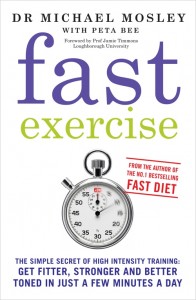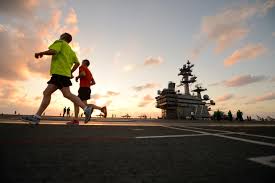Movement Is An Essential Nutrient
Posted on 21/11/2022
21 Enterprise House, Kingsway North, Team Valley, Gateshead, NE11 0SR
 When it comes to good health exercise and nutrition go hand in hand, but with our hectic, time pressed lifestyles many people ask: “What type of exercise should I be doing to get the greatest possible benefit in the time available to me?”
When it comes to good health exercise and nutrition go hand in hand, but with our hectic, time pressed lifestyles many people ask: “What type of exercise should I be doing to get the greatest possible benefit in the time available to me?”
Against this backdrop you may remember the spate of headlines a couple of years ago suggesting that just a few minutes of high intensity exercise a day was all you needed to achieve major improvements in your health and fitness, and that all those hours spent grinding it out in the gym or out on the running trails as dictated by conventional health and fitness wisdom were unnecessary.
Were those headlines really telling the whole story?
Well…er….no, there’s a bit more to it than that, but high intensity training does have its place within a well structured approach to exercise, and Fast Exercise looks into the effects that short bursts of high intensity training (HIT) can have on your body irrespective of your age or level of fitness, and claims to reveal the simple secret that will help you get fitter, stronger, leaner and better toned with just a few minutes exercise a day.
 Here are the key points that we took from the book:
Here are the key points that we took from the book:
1. The principles behind HIT are not new – in fact, they’re ancient, and echo the kinds of selection pressures our hunter gatherer paleolithic ancestors faced over many thousands of years of evolutionary progress.
Mark Sisson’s Primal Blueprint book and podcast series explains this better than anyone else we have come across to date, but Michael also makes the point that we evolved with “exercise” patterns that involved a lot of light background activity (such as walking) interspersed with short burst of moderate to high intensity activity (as we strove to catch our lunch, or avoid becoming the lunch of something else), and that our bodies are well adapted to this type of exercise pattern.
2. There is high quality science that shows that HIT delivers significant improvements in aerobic fitness and endurance, reduces body fat levels, increases upper and lower body strength, and improves insulin sensitivity.
If you want to lose fat then intensity is the key, and the “long and slow” (or low intensity/high duration) is not the way to go for weight loss.
What’s more, improvements in aerobic fitness (as measured in VO2 max improvements) and blood sugar control are two of the most important predictors for a long and healthy life, and these are more powerfully influenced by HIT exercise patterns than lower intensity workouts.
However – and this is where the headlines can be misleading – other authors point out that whilst the benefits of HIT are very significant, lower intensity exercise still has an important role in a well structured exercise plan in that it helps build a strong and supple body, and an aerobic base from which higher intensity efforts can be safely launched. Building this foundation of strength and suppleness in a gradual way matters, as the premature and unrealistic launch into high intensity exercise patterns is a common cause of many of the injuries we see in our patients!
 3. HIT exercise produces greater numbers of more active mitochondria in skeletal and heart muscles than does lower intensity training.
3. HIT exercise produces greater numbers of more active mitochondria in skeletal and heart muscles than does lower intensity training.
Mitochondria are the site of energy production within cells, so the more you have and the better they work makes for a fitter, stronger, healthier you.
So how should HIT training fit into an overall approach to exercise? Well, page 56 offers the following guidelines (which are remarkably similar to those advocated by Mark Sisson of The Primal Blueprint fame):
 In conclusion, Fast Exercise contains many other fascinating insights on the benefits of high intensity exercise, and provides practical suggestions for how to go about safely incorporating it into our lifestyle, but perhaps its greatest feature is that it shows how just a few minutes exercise a day can make a huge difference to our health in a relatively short period of time, and that when this information is coupled with a reasonable understanding of nutrition we have the most powerful tools we require to stay healthy and lead long and active lives.
In conclusion, Fast Exercise contains many other fascinating insights on the benefits of high intensity exercise, and provides practical suggestions for how to go about safely incorporating it into our lifestyle, but perhaps its greatest feature is that it shows how just a few minutes exercise a day can make a huge difference to our health in a relatively short period of time, and that when this information is coupled with a reasonable understanding of nutrition we have the most powerful tools we require to stay healthy and lead long and active lives.